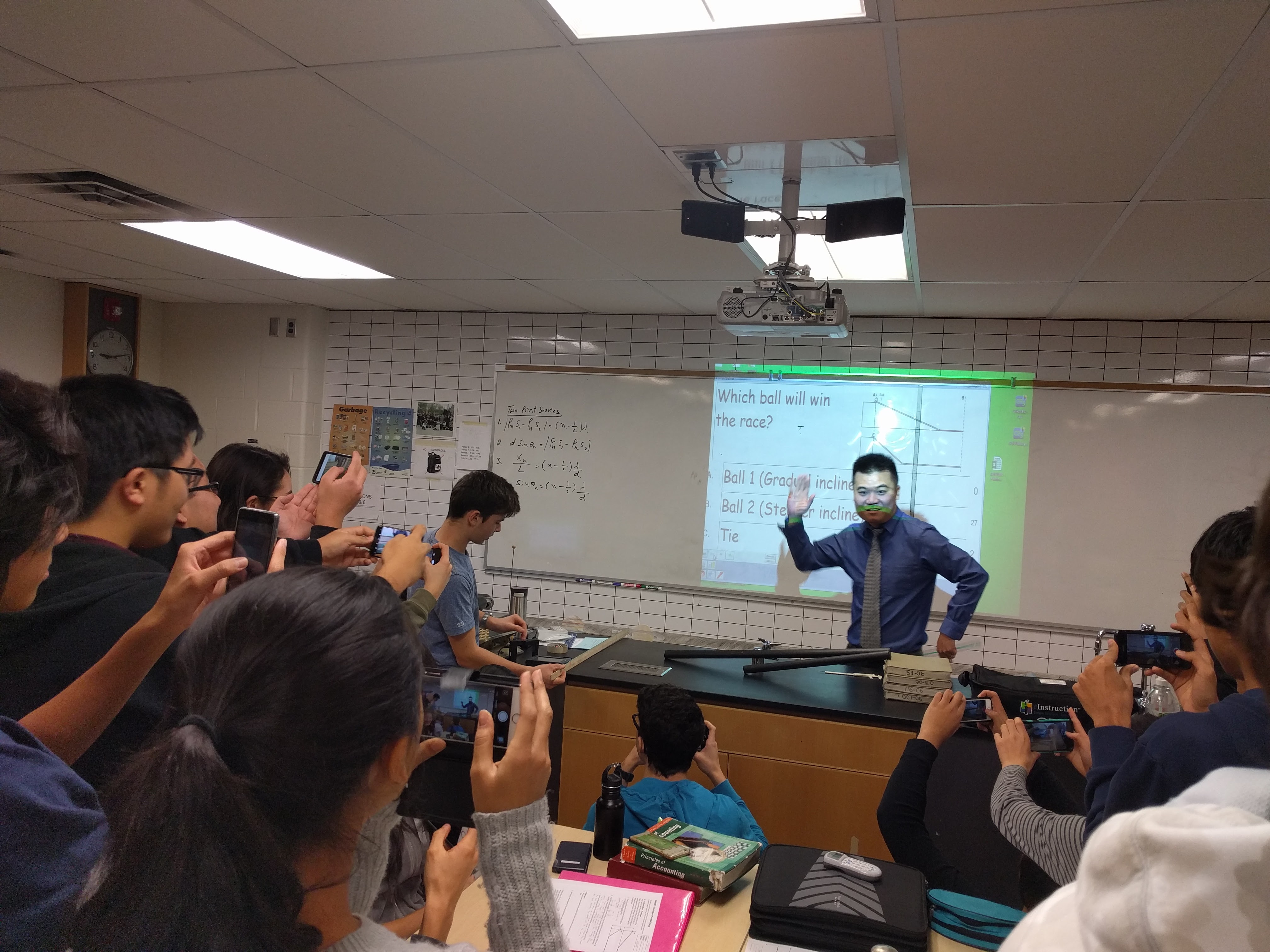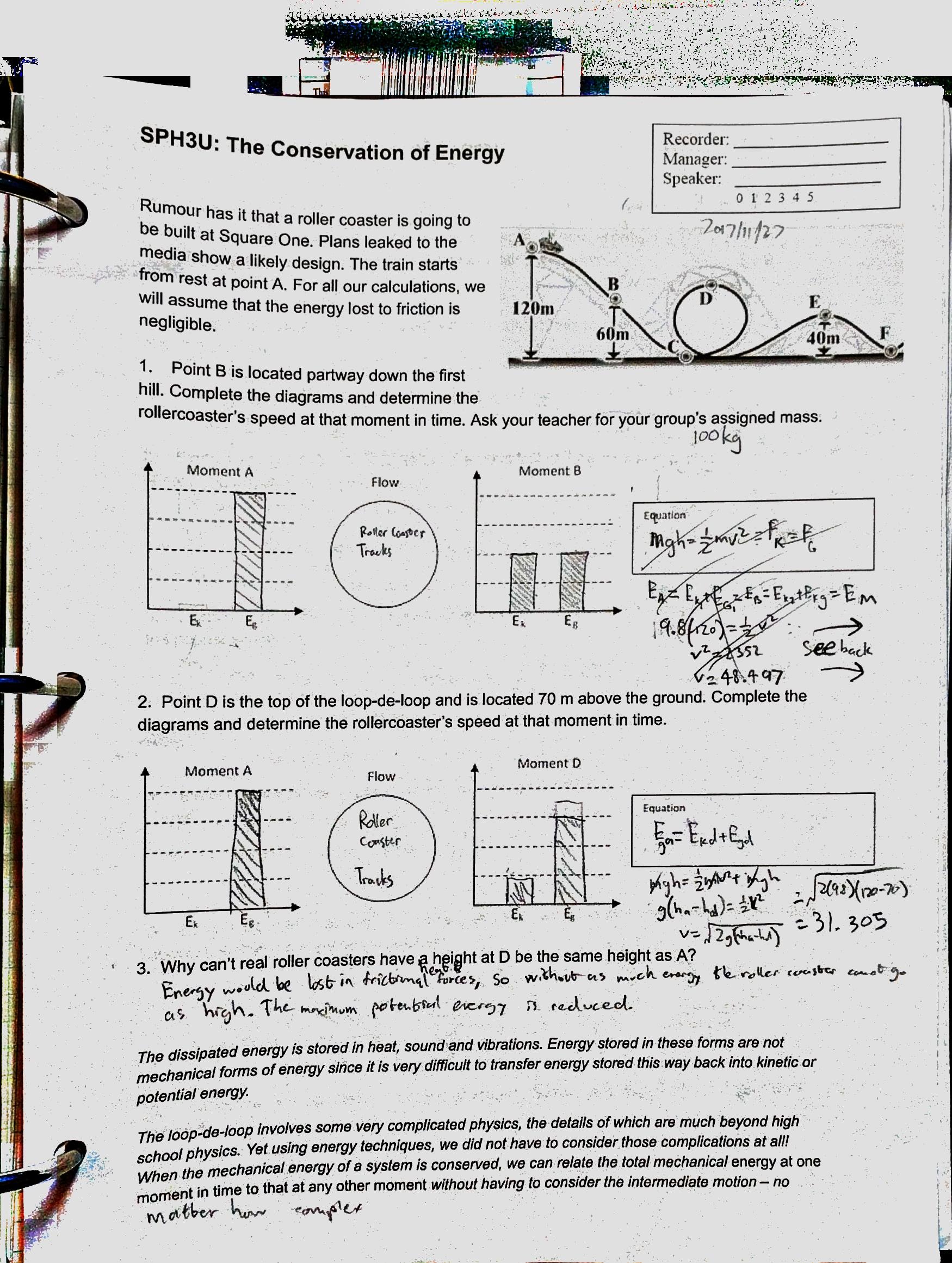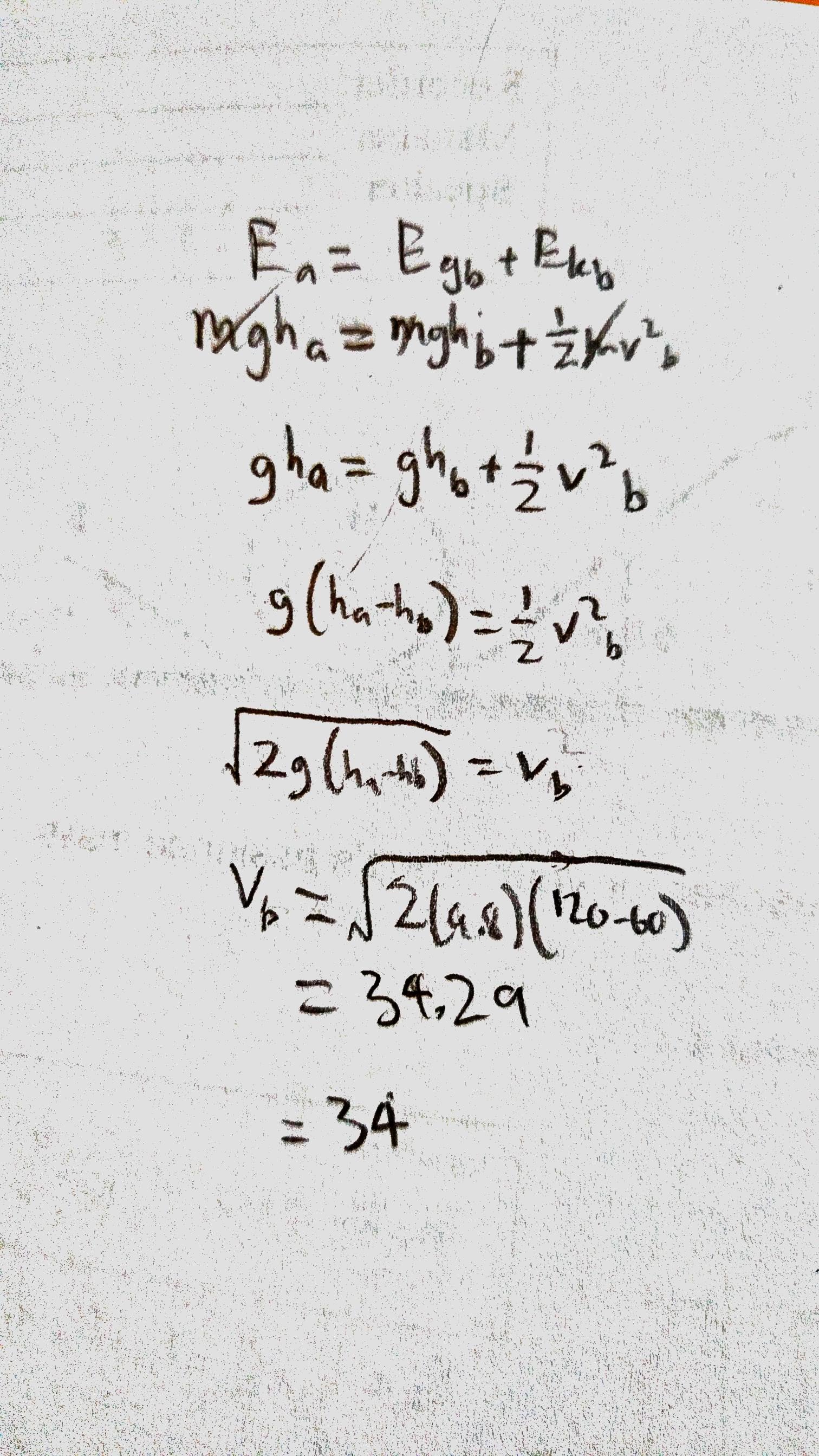GPE and Friday's Friction Graphs
Today in class we learned about Gravitational Potential Energy and how it relates to the movement of an object. This was demonstrated through rolling a ball down from the same height but at different angles, as well as through the use of clickers.

Mr. Fong doing a demonstration with two ramps at different slopes
Today I learned:
When rolled from an incline of the same height, two balls will have the same ending velocity even if the inclines are on different angles. Steeper angle of incline just means that the gravitational potential energy will be transfomed to kinetic energy faster, while a less steep angle means that it will take longer to transform the energy. This means that the ball on a steeper incline will reach the ground in a shorter amount of time (not faster but the same time) as it gets faster at a faster rate, even though both balls will have the same ending velocity.
The mass of an object does not matter when calculating the final velocity at the end of an incline. Since the energy of the system is not going to change, we can use mgh = 1/2 mk^2 and from there, we can see that mass cancels out. This is similar to kinematics, where we did not need to know the mass of an object to determine the movement. Only the acceleration of gravity and the height is needed for the Graviational Potential Energy, and using that we can determine the kinetic energy.
I also finished the work that I missed on Friday for graphing the frictional forces. This included taking sample data, and graphing with the units. The data also had error for each datapoint, but Google Sheets could not display a graph with various error bars, so I averaged the datapoints. I also took the slope, and the units from it. Finally, the results were compared to a target result, and an error percentage was taken (around 5%, not too bad). There was also work to be done with roller coasters, and that involved writing the energies involved when going around a loop de loop and up inclines. As the roller coaster goes down the hill, it gains kinetic energy from the GP energy it had from when it was very high. It then uses that kinetic energy to go up another hill or loop, and gains GP energy again. On a perfect frictionless track this would mean that the roller coaster could just keep going up and down forever. But in real life, there is energy lost to vibration, friction and other forces that take away energy. The energy transformations aren’t perfect, and that’s why roller coaster hills keep getting smaller.


Today I wondered:
I still wondered why there is a 1/2 in 1/2 mk^2 and why k is squared. I looked at the wikipedia page, but it said it had to do with calculus and other advanced maths, so I am not too sure.
What is the optimal design for an incline to get a ball from one place to another? I suppose it would be curved downwards, so that the ball would reach a maximum velocity faster, and compromise with an acceptable distance.
E: I did some reading, and saw this Wikipedia page. It is a curve that goes slightly below the normal of y=0 and curves back up. Quite interesting. It does not take the shortest distance, rather the distance which will give the maximum velocity for the maximum amount of time, transforming GP energy to K energy while compromising on the distance. Image:
Today I had an intriguing idea:
The shortest path is not always the fastest path. It is the path that allows you to get the fastest that is the fastest path.
People don’t get to a destination faster than someone else, they get there in less time than someone else. In the case of the ball, one doesn’t end faster than the other, but the time is different.
After Unit Reflection
This post connects to requirement #1. It discusses the applications of energy transformations to a roller coaster that which was one of the worksheets that we did. The real world isn’t frictionless, and rollercoasters hills must get lower and lower as they get to the end. Most energy transformations involve some loss of energy to heat, sound, vibration or friction. Maybe a maglev roller coaster can help reduce the friction…
This post also conncts to requirement #3. It includes problems involving the energy transformation problems of a roller coaster.